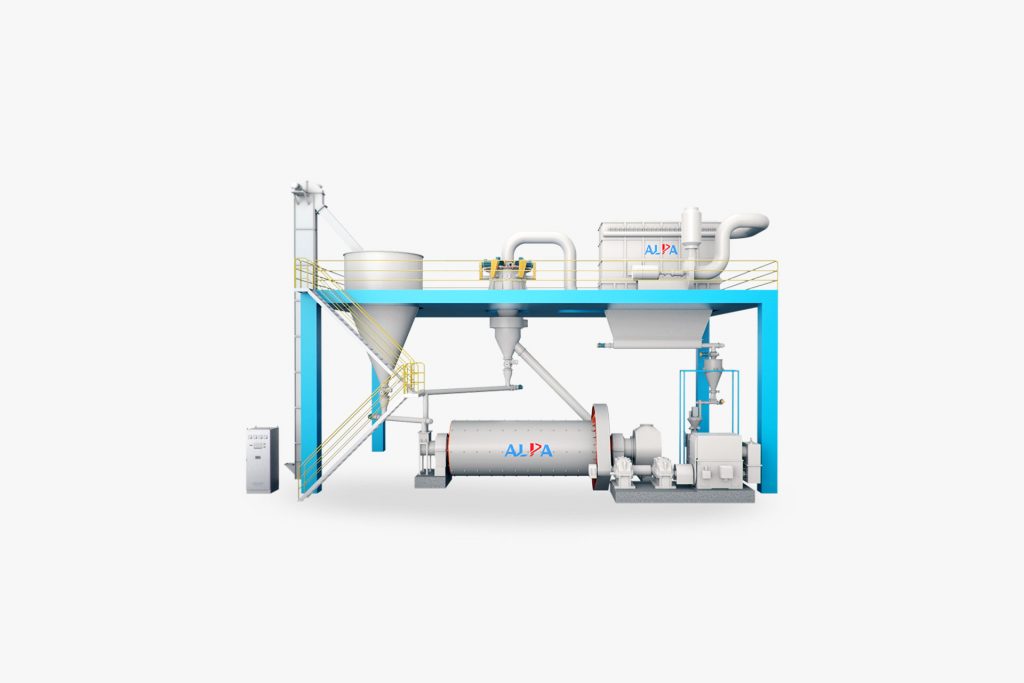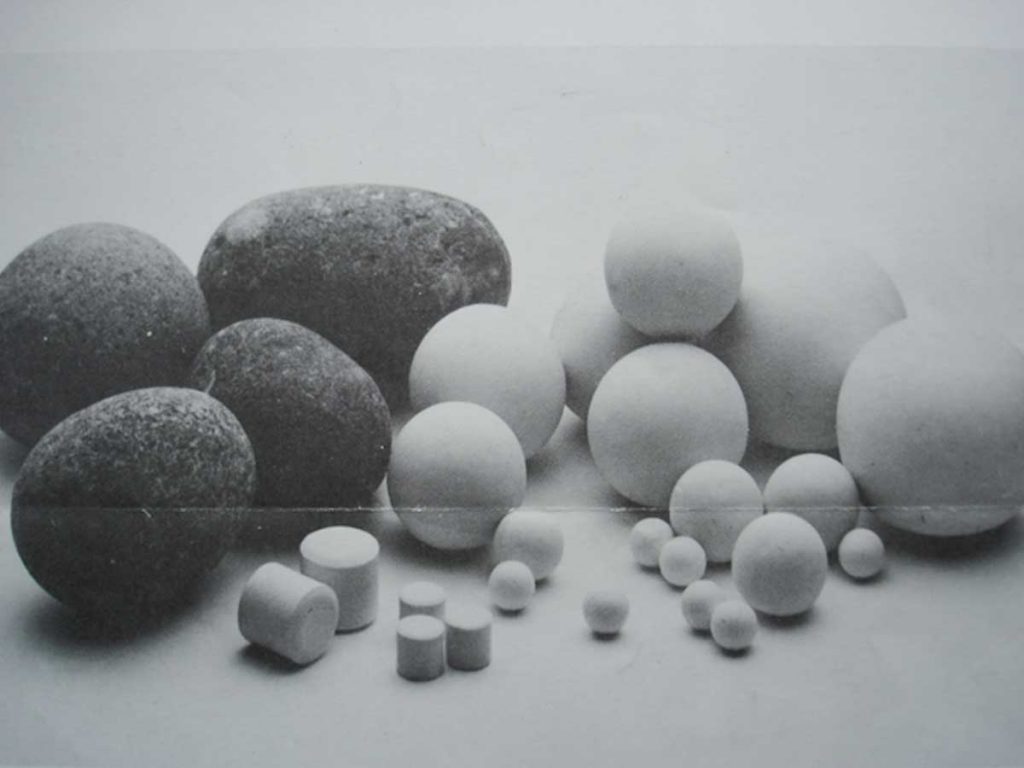View the ball mill from the perspective of powder
When it comes to building materials, what do you think of? Is it the first thing that comes to mind is cement! The cement production process can be summarized in four words: “two grinding and one burning”, that is, raw meal preparation, clinker calcination, cement grinding, and the grinding process uses a ball mill.
Do you know what a ball mill is?
Ball mill is the key equipment for crushing materials after crushing. Ball mill is one of the high-fine grinding machines widely used in industrial production. It is suitable for grinding various ores and other materials, and is widely used in mineral processing, building materials and chemical industries.
Why is it called a “ball” mill, and what does “ball” mean?
The pulverization of materials by the ball mill is achieved by grinding media. The transmission mechanism transmits mechanical energy to the grinding media, and the materials are crushed through various mechanical forces generated between the media. The grinding media in the mill is mainly steel balls (steel sections), so it is called a ball mill.

What is the structure of the ball mill?
The ball mill is composed of a liner, a compartment plate, a cylinder, a transmission system, a feeding and discharging device, and a main bearing.
What is the state of the grinding body?
Leakage type: the speed is too slow, the grinding body cannot be brought to a suitable height, it only has a grinding effect on the material, and the impact force is very small.
Throwing type: the speed is moderate, the grinding body is brought to a certain height and then falls in a parabolic motion, which has a greater grinding effect and impact on the material.
Circumferential type: the speed is too fast, the grinding body and the material are close to the wall of the cylinder without falling, and the grinding body does not have any grinding and impact effects on the material.

How to choose a grinding body?
- Quantity
The smaller the quantity, the higher the rotation speed of the cylinder, and the smaller the grinding effect; on the contrary, the lower the rotation speed of the cylinder, the greater the grinding effect.
- Particle size
Generally, it is appropriate to control the particle size of the material to be milled to <15mm. For large-scale mills, due to its strong crushing ability, the particle size of the incoming materials can be increased to 25-30mm. However, the particle size of the material entering the grinding of a large vertical raw mill can reach 100mm, so the specific particle size of the material entering the grinding should be determined according to different conditions.
- Size
For materials with larger or harder particle size, the average size of the grinding body is large and the quantity is small; on the contrary, the average size of the grinding body is small and the quantity is large.
What are the requirements for grinding media?
- Relative density of grinding media
The relative density of different grinding media materials will naturally vary greatly. So far, the relative density of the grinding media commonly used in the industry is in the range of 2.2~14gcm2. It is generally believed that the relative density of the media is related to the viscosity of the slurry.
- Media size
The medium size is small, the contact points of the medium ball are many, and there are many opportunities to grind the material. Generally speaking, the feed size is small, and the finer the product size, the smaller the diameter of the medium.
- Media shape
The more the media contact type changes, the narrower the particle size distribution of the milled product.
- Dielectric ball shape and indicated roughness
The artificial grinding media are mostly spherical, and the steel ball of the ball mill is not well made. When the shape of the steel ball is poor, the rotation motion is blocked, which is not conducive to pulverization, and on the contrary, the wear is increased.
- The mechanical strength and chemical stability of the dielectric ball
The mechanical strength of the media ball refers to the ability of the media ball to resist compression and impact under normal working conditions. For steel balls and cemented carbide balls, such problems generally do not exist, while glass balls and ceramic dielectric balls are very important. The grinding media ball should not produce chemical reaction with the material to be ground, and the pH value is stable. The grinding media usually uses oxides to improve stability.
How to classify ball mills?
According to the grinding media, it can be divided into ball mills, rod mills, and gravel mills; according to the shape of the barrel, it can be divided into short barrel mills, long barrel mills, and conical mills; according to the discharging method, it can be divided into tail unloading, The middle part unloads the grinding; according to the rotation mode, it can be divided into center rotation and edge rotation; according to the operation process, it can be divided into dry mill and wet mill.
What are the advantages and disadvantages of ball mills?
- Advantages
Strong adaptability to materials; large crushing ratio; can be operated dry or wet, and drying and grinding can be carried out at the same time; simple structure, high operation rate, reliable operation.
- Shortcoming
The grinding efficiency is low, and the effective utilization of electric energy is low; the equipment is heavy and the one-time investment is large; the noise is large, and the vibration is strong; the speed is low, and it needs to be equipped with deceleration equipment.
What are the application areas of ball mills?
The beneficiation production line in the beneficiation industry, the refractory materials and new building materials in the building materials industry, the fertilizer and silicate products in the chemical industry.
Summary
Generally speaking, the longer the milling time, the less obvious the particle size reduction. Ordinary ball milling can only reach 1-10μm, and circulating stirring ball milling can reach about 1μm. To reach nanometer-level particles, an ultra-fine ball mill is required, and the maximum can reach tens of nanometers.
According to the data, the particle size of some high-energy ball mills can reach about 1 micron, and the limit of sub-micron level is about 500nm. Using planetary ball milling, ball milling can reach about 70nm in 48h, but it depends on the nature of the powder. Among them, the ball-to-material ratio, medium, etc. will affect the ball milling effect. At the same time, attention should be paid to the problem of agglomeration when grinding to nanometer level.
In the field of fine grinding, the market demand for granular materials continues to grow, which provides an excellent opportunity for the development of ball mills. With the continuous deepening of reform and opening up, the domestic ball mill industry is resurging in recent years. On the basis of drawing on foreign advanced technology, China is moving towards the direction of large-scale ball mills.
Article source: China Powder Network
